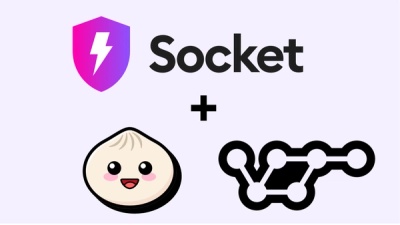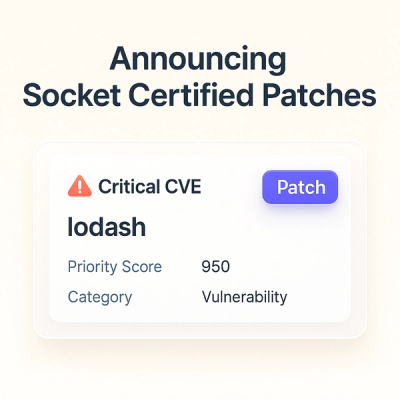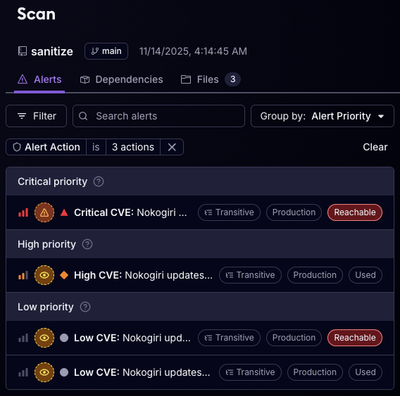
Product
Announcing Bun and vlt Support in Socket
Bringing supply chain security to the next generation of JavaScript package managers
meskyanichi-is_listable
Advanced tools
= Is Listable
"Is Listable" is a gem that provides a way to implement a simple listing method by using generated view helpers to create up and down buttons. This will allow you to very quickly get the "Move Up" and "Move Down" button functionality to move your database records up and down in order.
This plugin depends on the acts_as_list plugin. I have created a gem version out of it for convenience when installing this gem.
== Installation
gem sources -a http://gems.github.com sudo gem install meskyanichi-is_listable
== Simple Setup
==== Initializing the gems inside "environment.rb" config.gem "meskyanichi-is_listable", :lib => "is_listable", :source => 'http://gems.github.com' config.gem "meskyanichi-acts_as_list", :lib => "acts_as_list", :source => 'http://gems.github.com'
==== PostModel class Post < ActiveRecord::Base acts_as_list end
==== PostsController class PostsController < ApplicationController is_listable end
==== PostsController#index
<% @posts.each do |post| %> <% end %>| Position | Name | |
|---|---|---|
| <%= up_button_for_posts(post) | <%= down_button_for_posts(post) | <%= post.name %> |
This is basically all it takes to already get the gems working their magic. This will by default assume the posts table in the database has a "position" column which will determine the records position.
== Additional Options
Here's what additional options you can pass to the methods provided by the Is Listable gem.
=== is_listable
The is_listable method takes a hash of options. These are the following options you can provide:
View the implementation examples below:
==== :column Specify the column name that represents the position in the database class PostsController < ApplicationController is_listable :column => 'position' end
==== :controller Specify the controller name which the is_listable should be invoked on. 99% of the time you do not need to provide it, as the is_listable method knows what controller invoked it. class PostsController < ApplicationController is_listable :controller => "posts" end
==== :model Specify the model name which the is_listable should be invoked on. By default it will try to use (in this case) the Post model, since it's the singular and camelcased "posts". If Post is not the model you wish to the PostController make listable, just provide the :model hash value of the model you would like to sort. class PostsController < ApplicationController is_listable :model => "Post" end
==== :scope Pass in an ActiveRecord object that's associated to the model. It is mainly to prevent user's from haxing the web app and then updating other users' record position. So this is a very simple solution that'll prevent it from happening. class PostsController < ApplicationController is_listable :scope => current_user end
==== :redirect_to This option will allow you to specify a location to redirect to after the sort process has completed. By default it will redirect back to the page the request came from. class PostsController < ApplicationController is_listable :redirect_to => {:controller => "posts", :action => "index"} end
==== :permalink Let's say that you are using permalinks to allow pretty URL's. This would normally conflict since is_listable only accepts objects as a parameter in the view helpers that are provided. However, the :permalink option will fix this problem! If you are using, for example, the plugin "permalink_fu" and let it handle the creation of permalinks, you will most likely have permalinks stored in the "permalink" attribute inside your database. If this is the case, you can let is_listable work together with it like so. Note: Of course, if the permalink attribute inside the database is called, for example, "perm", you just replace the string "permalink" with "perm". class PostsController < ApplicationController is_listable :permalink => "permalink" end
=== up_button_for_object and down_button_for_object
Once the is_listable method is invoked on a controller, it will generate two view helpers which will be available to all views. This is a very simple implementation, and the arguments taken are similar to those of the link_to and button_to methods provided by Rails.
up_button_for_posts(post, options)
The first argument you must provide, should be the ActiveRecord object that's, for example, currently inside a @objects.each loop. The second argument takes a hash of options. Like the link_to() and button_to() they will accept "url" and "html" attributes.
up_button_for_posts(post, { :url => { :controller => 'posts , :action => 'position', :direction => 'higher', :id => post}, :html => { :id => "posts_up_button_#{post.id}", :class => "posts_up_button" } })
So like the example above, you can add any additional, or overwrite existing attributes/options inside the second argument as a hash. Note that, by default, the view helpers will automatically render out the id/class attributes on the html button tag the same as in the example above. So you can easily apply styles to the provided classes and perform javascript calls on these unique ids namings.
down_button_for_posts(post, { :url => { :controller => 'posts , :action => 'position', :direction => 'lower', :id => post}, :html => { :id => "posts_down_button_#{post.id}", :class => "posts_down_button" } })
So the work is basically done unless you are trying to accomplish something a little more complex that the defaults do not provide. But, usually this is not the case and you can just call the simple method like so:
up_button_for_posts(post)
However, what you might want to change frequently is the name/label of the button. By default the up_button_for_objects and the down_button_for_objects will either name the button "up" or "down" depending on which was called. To overwrite the defaults, you simply provide a name key/value of "name" like so:
up_button_for_posts(post, :name => "Move Up")
This will change the "Up" label to "Move Up".
== Copyright
Copyright (c) 2009 Michael van Rooijen. See LICENSE for details.
FAQs
Unknown package
We found that meskyanichi-is_listable demonstrated a not healthy version release cadence and project activity because the last version was released a year ago. It has 1 open source maintainer collaborating on the project.
Did you know?

Socket for GitHub automatically highlights issues in each pull request and monitors the health of all your open source dependencies. Discover the contents of your packages and block harmful activity before you install or update your dependencies.

Product
Bringing supply chain security to the next generation of JavaScript package managers

Product
A safer, faster way to eliminate vulnerabilities without updating dependencies

Product
Reachability analysis for Ruby is now in beta, helping teams identify which vulnerabilities are truly exploitable in their applications.